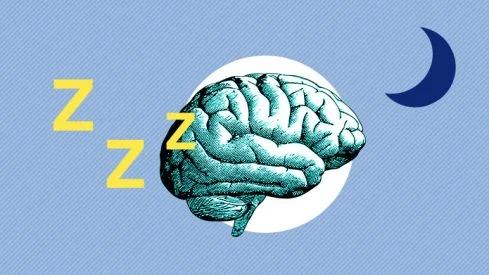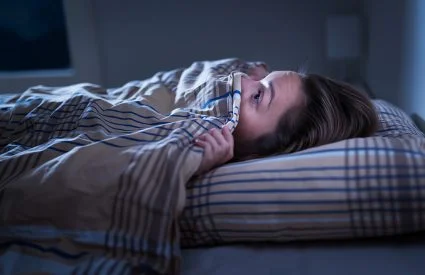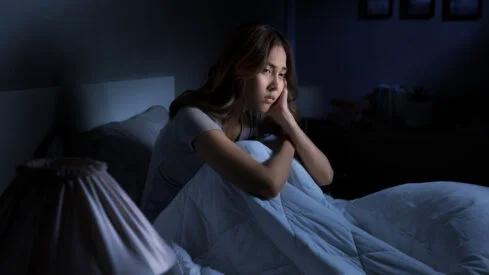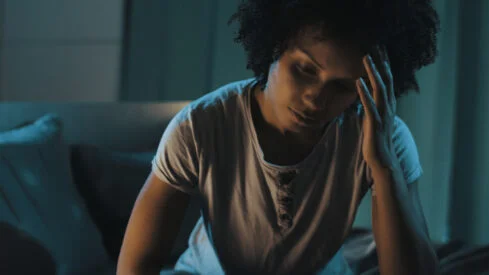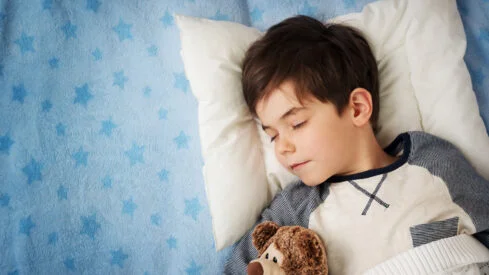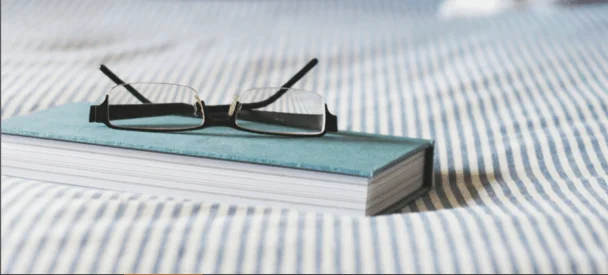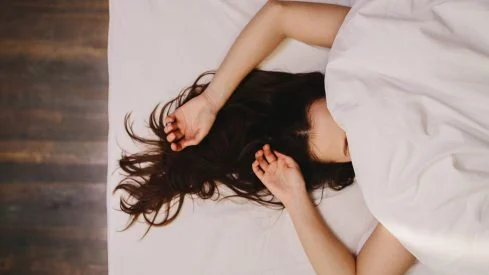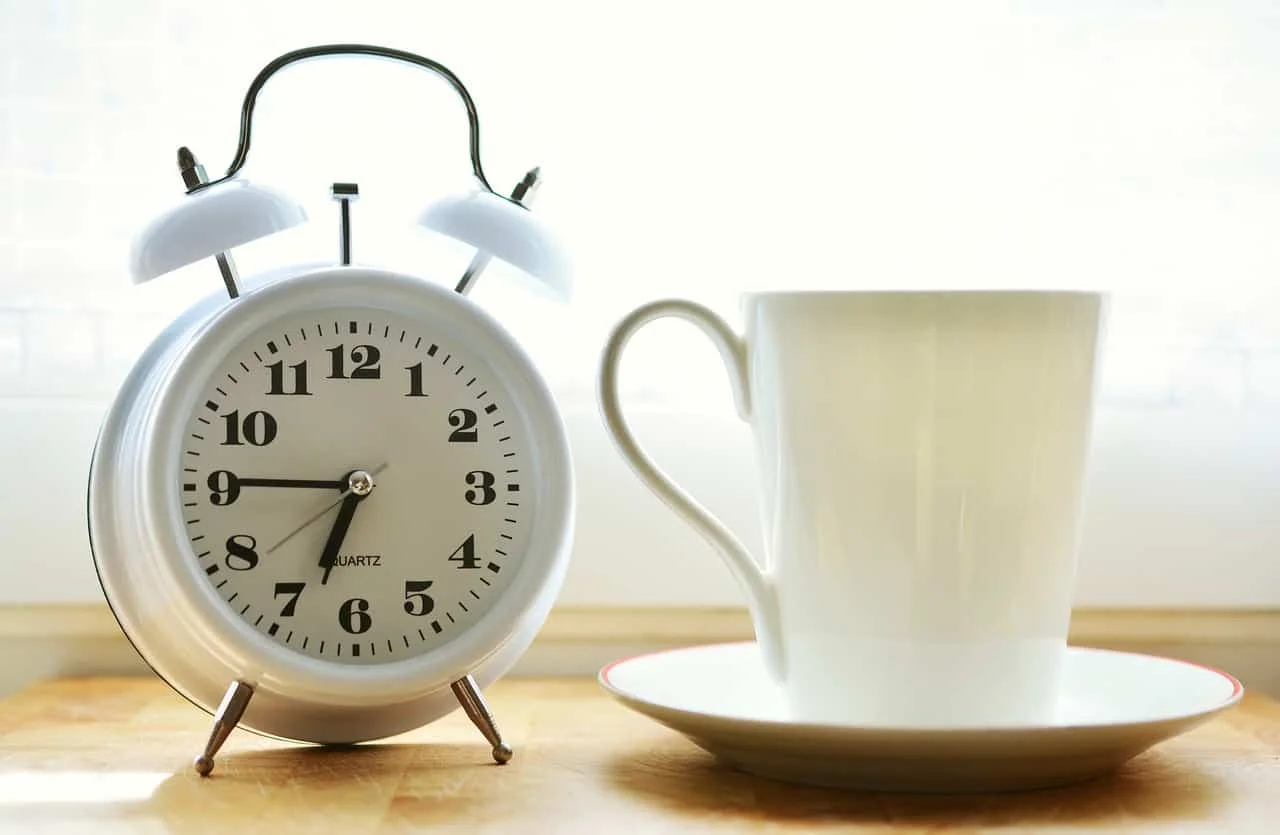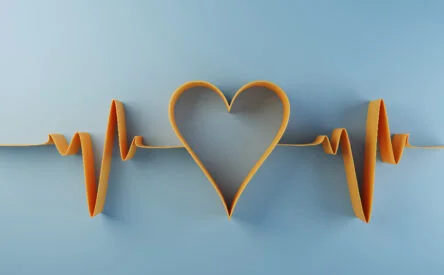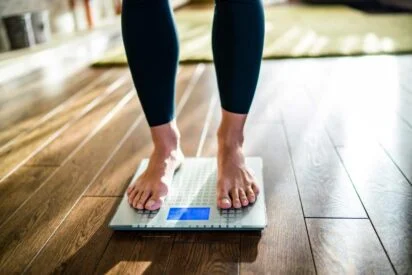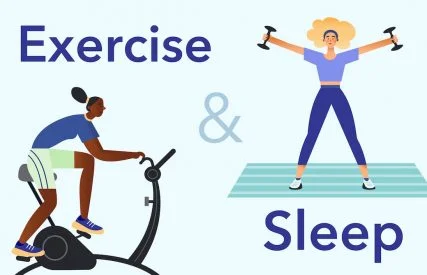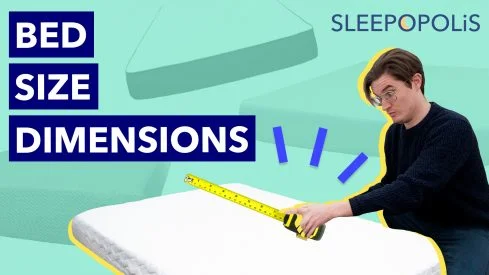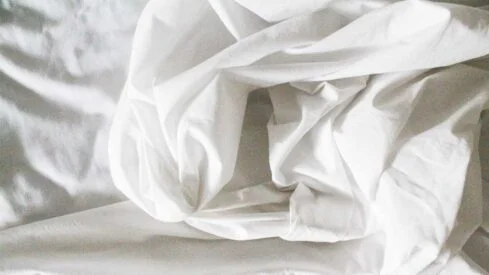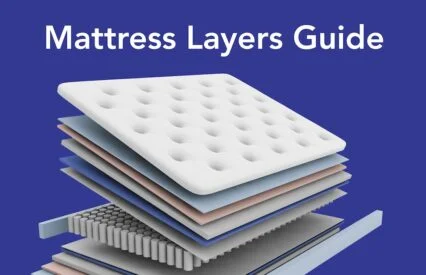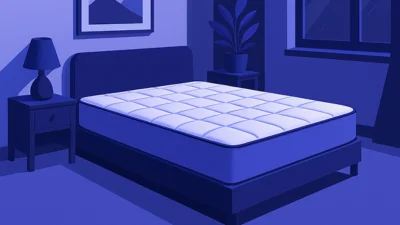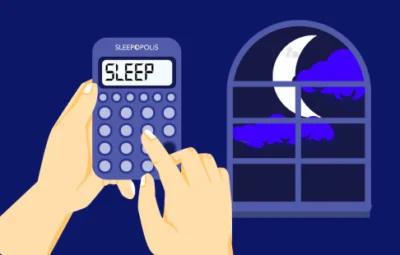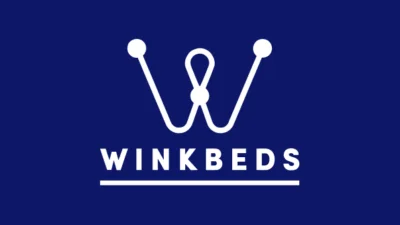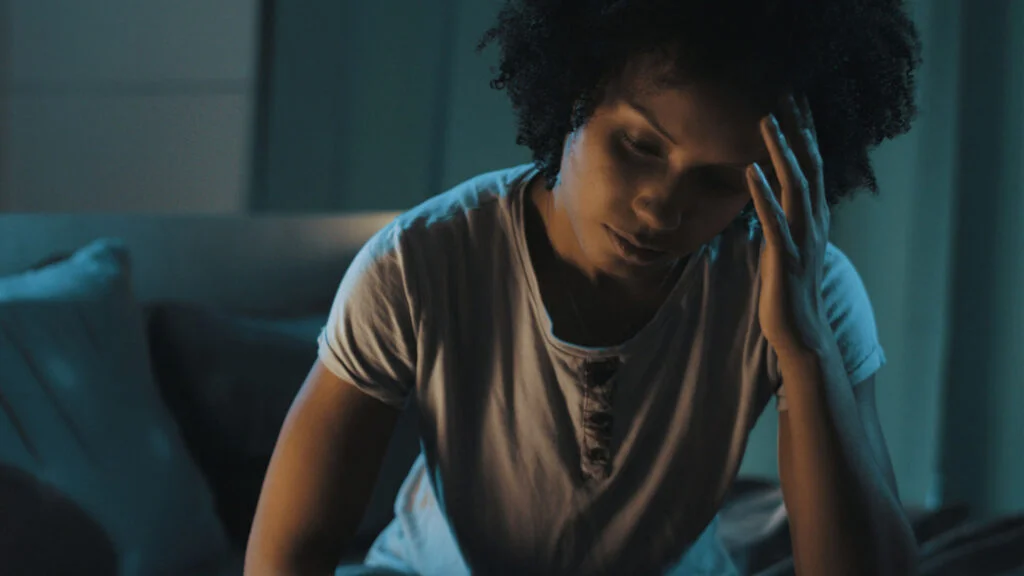
How much do we really need sleep? A lot, it turns out. Sleep rejuvenates our bodies and minds, gives our immune system a major boost, and repairs and builds tissues throughout the night. (1) Sounds pretty amazing, right? When sleep disorders steal your sleep, you can feel sluggish, cranky, and forgetful. We’re going to tell you all about sleep disorder causes and types, but hang in there! We’ll also let you know how you can overcome your sleep disorder and work your way back to long, restful slumber.
Long Story Short
- Almost 35 percent of American adults said they had a sleep disorder in 2020, and up to 70 million adults report chronically disturbed sleep.
- Sleep disorder causes can include age, family history, medical illness, environment, and psycho-social issues.
- Sleep disorders are diagnosed by questionnaires, assessments, and sometimes sleep studies.
- Your provider can recommend several treatment options for your sleep disorder, like medications, cognitive behavioral therapy, light therapy, natural products, and relaxation techniques.
What Are Sleep Disorders?
Sleep disorders describe conditions that keep you from getting the sleep you need. Whether they mess with your internal clock, pause your breathing willy-nilly, or block brain messengers from passing on the sleep memo, they can wreak havoc on your rest. They can impact everything from the quality, amount, and/or timing of your sleep. (2)
How Common Are Sleep Disorders?
According to the Centers for Disease Control (CDC), almost 35 percent of adults in the U.S. reported a sleep disorder in 2020. (3) The Institute of Medicine estimates between 50 and 70 million American adults report chronically disturbed sleep. (4)
For some, sleep disorders can be prevented if you set yourself up for success with good sleep hygiene, which we’ll tell you all about below. (5) Beyond sleep hygiene, prevention gets more disorder-specific — for example, sleep apnea can often be prevented with a healthy diet and exercise. (6)
Who Is at High Risk for Sleep Disorders?
Some sleep disorder risk factors depend on the type of sleep disorder you have. “However, across them all there may be some more common factors,” Dr. Peter G. Polos, MD, pulmonologist, sleep medicine physician, and associate professor of sleep medicine at Hackensack JFK Medical Center tells Sleepopolis. These may include: (2)
- Age
- Medical illness
- Medication
- Psycho-social issues
- Environment
Beyond these common culprits, risk factors start to get more specific. “For example,” says Polos, “men are at a higher risk to be diagnosed with sleep apnea because they generally have a larger neck circumference than women, and people with thicker necks have more narrow airways.” (7) With hypersomnia, a recent brain infection or head injury can put you at higher risk, and a childhood history of parasomnias can make you more likely to experience these disorders as an adult. (8) (9)
Risk goes both ways. If sleep disorders stick around, they can lead to other health problems like high blood pressure, diabetes, and depression. (10) But hang in there! For all the sleep disorder categories you’re about to peruse, there are just as many tips, tricks, and treatments to fight for good sleep.
Sleep Disorder Categories
Sleep disorders come in all shapes and sizes. Different organizations have labeled and categorized these in various ways, but the International Classification of Sleep Disorders (ICSD) has landed on six different categories: (11)
- Insomnia Disorders
- Central Disorders of Hypersomnolence
- Sleep-Related Breathing Disorders
- Circadian Rhythm Sleep-Wake Disorders
- Parasomnias
- Sleep-Related Movement Disorders
Each of these categories contains different sleep disorders, like sleep apnea, hypersomnia, and restless leg syndrome. Let’s take a look at what sets each apart.
Insomnia Disorders
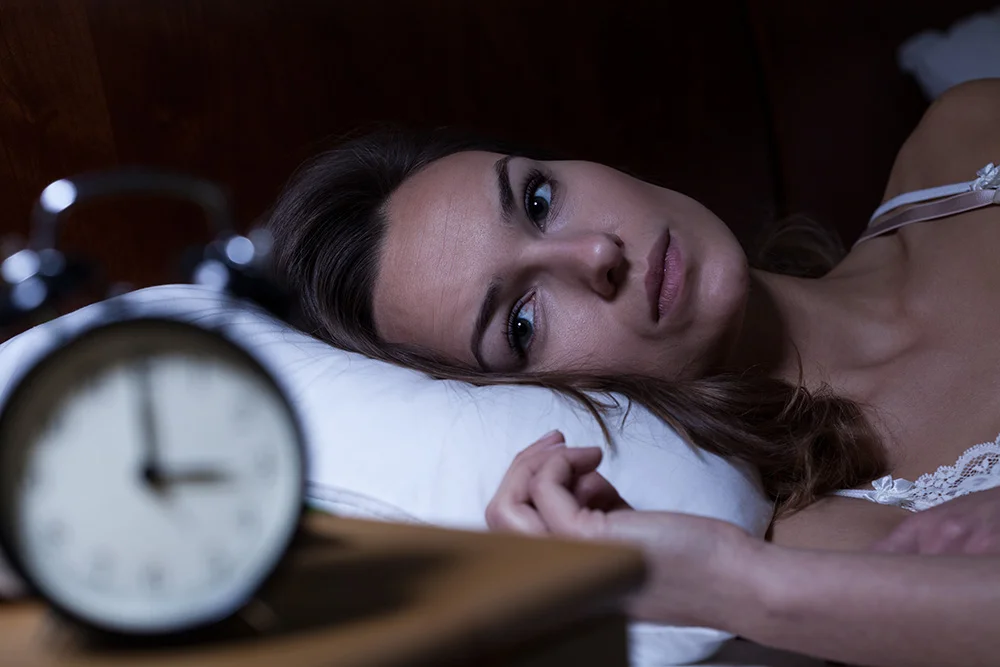
As the most common sleep disorder, you may already know all about insomnia. This disorder makes it hard to fall asleep, stay asleep, and sometimes both. (4) (12) Insomnia typically falls into one of two categories: (12)
- Short-term insomnia can disrupt sleep for a few days to weeks.
- Chronic insomnia disturbs sleep for at least three nights a week for more than three months.
Plenty of things can cause short-term insomnia, or transient insomnia, like stress, too much caffeine, or an argument with your partner. (12) (13) Chronic insomnia doesn’t have a specific cause, but you are more likely to experience this sleep disorder the older you get. Your work schedule, sleeping environment, and lifestyle can all contribute. Some hormones can factor in, meaning women deal with insomnia more than men. (12) (13)
Not sure if this describes you? Here’s what insomnia looks like: (14)
- Difficulty falling asleep
- Waking up often throughout the night
- Waking up very early, unable to go back to sleep
- Daytime sleepiness
- Anxiety and depressive symptoms
- Trouble focusing
Central Disorders of Hypersomnolence
Hypersomnolence disorders can lead to hypersomnia or excessive sleepiness. (8) But don’t all sleep disorders make you sleepy? Yes, but this is where the word “central” comes in, which tells us these sleep disorders may be caused by a problem in the central nervous system. (15) (16) Some examples of central disorders of hypersomnolence include:
- Hypersomnia: makes you feel extra sleepy throughout the day, and can cause excessive sleeping at night (8)
- Narcolepsy: causes sudden periods of deep sleep at any time during the day, and can also cause extreme daytime sleepiness. (17)
While experts don’t fully know the cause of these disorder types overall, they believe narcolepsy is caused by low levels of a chemical messenger in your brain called hypocretin, which normally helps you stay awake when you need to. (17)
Hypersomnia, on the other hand, can be caused by nervous system problems, but more often is caused by another sleep disorder, a medical condition, or substance abuse. (8)
Symptoms of central disorders of hypersomnolence can be very patient and condition-specific, but the thing that ties them all together is excessive daytime sleepiness. (15) (18) This sleepiness in turn can cause symptoms like: (18)
- Reduced performance efficiency (at work or school)
- Less concentration
- Decreased memory
Sleep-Related Breathing Disorders
Many a sleeping partner has woken to the cacophony of loud snores coming from the person next to them. Some snoring can even be heard from the next room. But sometimes this jarring sound can be a symptom of a more complex issue: a sleep-related breathing disorder. (19) (7)
These disorders cause not only snoring but brief pauses in breathing throughout the night. (7) (19) Sleep-related breathing disorders can be broken down into two categories: (7)
- Central sleep apnea
- Obstructive sleep apnea
The cause behind sleep-related breathing disorders depends on the category: Central sleep apnea happens when your brain has trouble sending signals that tell you to breathe, whereas the obstructive type stems from a physical block in your airway (like your tongue or tonsils). (7)
While their causes may differ, these disorders lead to the same list of symptoms: (20)
- Daytime sleepiness
- Dry mouth
- Gasping for air while you sleep
- Headaches
- Loud snoring on a regular basis
- Pauses in breathing throughout sleep sessions
Circadian Rhythm Sleep-Wake Disorders
Your sleep is partially run by a 24-hour internal clock called the circadian rhythm. This internal timepiece tells you when it’s time to fall asleep and when it’s time to wake up. (21) Sometimes this rhythm can get out of sync because something disrupts your schedule, but this can also happen because of a genetic predisposition or a change in hormone levels. When your sleep-wake schedule goes off the rails, you can develop circadian rhythm disorders like: (22).
- Delayed sleep phase syndrome, which causes your circadian rhythm to get pushed back, so you want to fall asleep and wake up later. (23)
- Shift work sleep disorder, which can cause circadian rhythm confusion for shift workers who change their sleep schedule regularly. (24)
Circadian rhythm, or sleep-wake disorders can cause symptoms related to sleep loss, including: (25)
- Difficulty concentrating
- Excessive sleepiness during waking hours
- Extreme fatigue and exhaustion
- General aches and pains
- Impaired judgment
- Mood swings
- Trouble falling asleep and/or staying asleep
Parasomnias

Have you ever been told you talk in your sleep? Or perhaps you’ve woken up in a different spot than the one you fell asleep in? If so, you’ve experienced parasomnias, which is a group of disorders that describe any abnormal behavior during sleep, including nightmares, sleep talking, and sleepwalking. And while the last two can provide many hilarious anecdotes shared over your morning coffee, they can affect sleep if they crop up too often. (9) Parasomnias are usually identified as one of these disorders:
- Nightmare disorder: refers to more than the average nightmare: it causes repeated vivid and distressing dreams.
- REM sleep behavior disorder: sometimes called “dream-enacting behavior,” happens during REM sleep, and can cause sleep talking.
- NREM sleep arousal disorder: crops up during the non-rapid eye movement stage of sleep and can stimulate sleep terrors and sleepwalking.
Experts don’t know what exactly causes parasomnias, but plenty of theories have been thrown out there. Some believe parasomnias can be triggered by anything that affects your slow-wave sleep, like alcohol, medications, fever, and other sleep disorders. (9)
Depending on the specific disorder, parasomnias can produce different symptoms:
- Bedwetting (26)
- Nightmares
- Sleep talking
- Night terrors
- Sleepwalking
Sleep-Related Movement Disorders
Sleep-related movement disorders are often lumped together with parasomnias, but they have their own category. Instead of talking or walking, if you have a sleep-related mood disorder, you may display uncontrolled rhythmic movements or behavior during sleep. (27) This category can be broken to into several disorders, including:
- Periodic limb movement disorder (PLMS): causes periodic rhythmic jerking of your legs while you sleep. (28)
- Restless leg syndrome (RLS): feels like an uncontrollable urge to move your legs, especially after a period of rest (29)
- Bruxism: describes grinding, clenching, or gnashing your teeth while you sleep30 (30)
The causes of sleep-related movement disorders are mostly unclear, but experts believe family history and the presence of certain genes may play a part. These disorders often coexist with other sleep disorders, but no one can say yet which one causes the other. (27) (28)
Sleep-related movement disorders can sometimes disrupt sleep and lead to excessive daytime sleepiness. Common symptoms with these disorders include: (27) (28) (30)
- Daytime fatigue
- Insomnia
- Muscle jerks while sleeping or trying to sleep
- Waking up often at night
How Are Sleep Disorders Diagnosed?
If any of these symptoms ring a bell and you think you may have a sleep disorder, the best thing you can do is meet with your healthcare provider to talk it over. They will talk over your sleeping issues with you and decide how you can both get to the bottom of it. (2) (31)
History
“A proper [recording of] history is crucial in making a diagnosis,” Polos says. This history-taking is sometimes called a sleep survey. Some questions your provider might ask you during a sleep survey include:
- How long does it take you to fall asleep at night?
- Do you stay asleep throughout the night? If not, what wakes you?
- On average, how many hours of sleep do you get each night?
- Do you wake up before your alarm?
- Do you feel satisfied with your sleep?
- How often do you feel sleepy during the day?
During your visit, your provider may ask about any medications you’re taking, old and new. They might also ask you to keep a sleep diary, which is a record of how you slept each night while it’s still fresh in your memory. Over time, your doctor can look at this diary and see patterns that can point to one diagnosis or another. (32)
Sleep Tracking
In this technological day and age, you have a world of sleep-tracking apps at your fingertips. “Sleep tracking can be beneficial in helping to determine a diagnosis for a potential sleep disorder, and there are many tools available that can help you and your doctor get a better understanding of your sleep habits,” says Polos. Here are some sleep tracking options you might consider:
- The RISE APP
- Withings Sleep Tracking Mat
- The Oura Ring
- The Fitbit Inspire 3
- The Sleep Cycle app
- The PrimeNap app
There are even some beds, like the Sleep Number 360® i8 Smart Bed, that can track your sleep!
Sleep Study
If sleep surveys and assessments don’t unearth the answer to your sleep woes, your provider may want you to get a sleep study. Sleep studies (also known as polysomnography) measure markers like your breathing, heart rate, and movements to track how well you sleep and to identify any possible causes for sleep troubles.
Some sleep studies are done at a sleep center or in the hospital, and others can be done at home. For an in-person study, you’ll spend the night at a sleep clinic (think slumber party, but boring). As you sleep, the staff will monitor your vital signs and note down any behaviors that may give your provider a clue as to what’s messing up your slumber. (31) (4) (7)
Sleep Disorder Treatments
Once you know the culprit, you can think about how to get back on the sleep train. The best place to start treating your sleep disorder is to set yourself up for success. “I advise people to periodically take account of their sleep environment and pre-sleep activities,” says Polos. “This means practicing good sleep hygiene such as following a regular sleep/wake time schedule, avoiding cell phone or TV use before bedtime, and more.”
However, he adds that if you feel there is a persistent sleep issue like insomnia, restless leg syndrome or sleep apnea impacting your sleep, you should let your provider know. That way you can get the treatment you need. Many treatments for sleep disorders diverge by type, but some treatments can work for many sleeping issues: (5)
- Cognitive behavioral therapy: A certified CBT provider can help you retrain your brain to overcome sleep obstacles.
- Light therapy: Exposing yourself to bright light first thing in the morning can help get your circadian rhythm back to normal.
- Medication: Your provider may recommend sleeping pills for a short period, and other sleep disorders are treated by a variety of different medication options.
- Natural products: Supplements like melatonin or natural scents like lavender can help some people sleep better, but be sure to check with your provider before starting anything new.
- Relaxation techniques: breathing exercises and other mindfulness techniques can calm your anxiety before bed.
If your sleep study results show you have sleep apnea, a CPAP (continuous-positive air pressure) machine can keep your airways open all night and make all the difference for a good night’s sleep. Some people say it can be tough to get used to, but once they do, they sleep much better. (5)
Tips for Better Sleep
If you’re still in the “feeling it out” stage of your sleep problems, you can try plenty of things to boost your quality snoozing. We mentioned sleep hygiene before, but let’s get into it a bit more. Sleep hygiene describes using good sleep habits that, working together, will help you fall asleep faster, stay asleep through the night, and feel more rested all day long.
Here are some habits that can do just that: (5)
- Avoid screens before bed: The blue light from screens can trick your body into thinking it’s party time.
- Get some exercise: When your body gets physical during the day, it’s that much more ready for sleep at night. Don’t exercise too close to bedtime, though, or the after effects might keep you awake.
- Keep a consistent sleep schedule: Go to sleep and wake up at the same time daily, and try not to veer too far off your schedule on the weekends.
- Make your bedroom a sleep oasis: Try to sleep in a dark, quiet, and cool room.
- Nap carefully: It’s best to skip naps if you can, but if you do sneak in a snooze, the earlier the better.
- Watch your pre-bed diet: Limit caffeine and alcohol leading up to bedtime, and avoid eating any heavy meals or drinking a ton of fluids before lights out.
FAQs
Are sleep disorders genetic?
“Some sleep disorders can be hereditary,” says Polos, who tells Sleepopolis that some research has found a genetic basis for sleep disorders like narcolepsy and insomnia. “Sleep apnea [also] appears to run in some families,” he adds, “suggesting there may be some genetic factors within a family which contribute to the disease.”
What triggers sleep disorders?
“Sleep disorders can occur for various reasons,” says Polos. “Although the causes may differ, sleep disorders are ultimately the result of a disruption to the body’s natural cycle of sleep and daytime wakefulness.” Polos adds that while sleep disorders don’t have triggers per se, they can be worsened by: (33)
- Physical disturbances (chronic pain)
- Medical issues (cardiovascular disease, medications)
- Psychiatric disorders (depression and anxiety disorders)
- Environmental issues (it’s too bright, loud or hot)
Can sleep disorders go away on their own?
Most sleep disorders don’t fade away on their own, says Polos. “At some point, there is some degree of recognition and intervention that is usually needed,” Polos says. “The intervention could be relatively simple, like identifying factors in the sleep environment or work stress that disrupts your sleep. In other cases, a history and physical exam by a sleep specialist may result in treatment with medication or a device.” (5)
The Last Word From Sleepopolis
Nobody enjoys the sleepy days that come from poor sleep. Sometimes good sleep can be easy to welcome back through good sleep hygiene, but other times we need help from a healthcare provider. If you find you can’t sleep and nothing seems to make it better, you may want to ask for help. Your provider can help you find out what’s going on and how best to fix it. Then hopefully before you know it, you’ll be back to sleeping to your heart’s content.
Sources
- How Sleep Works – Why Is Sleep Important? | NHLBI, NIH. Accessed September 14, 2024. https://www.nhlbi.nih.gov/health/sleep/why-sleep-important
- Sleep Disorders | MedlinePlus. Accessed September 14, 2024. https://medlineplus.gov/sleepdisorders.html
- Adults – Sleep and Sleep Disorders | CDC. Accessed September 14, 2024. https://www.cdc.gov/sleep/data-and-statistics/adults.html
- Common Sleep Disorders in Adults: Diagnosis and Management | AAFP. Accessed September 14, 2024. https://www.aafp.org/pubs/afp/issues/2022/0400/p397.html
- Sleep Disorder Treatments – Sleep Disorder Treatments | NHLBI, NIH. Accessed September 14, 2024. https://www.nhlbi.nih.gov/health/sleep-disorder-treatments
- Sleep Apnea – Treatment | NHLBI, NIH. Accessed September 14, 2024. https://www.nhlbi.nih.gov/health/sleep-apnea/treatment
- Sleep Apnea – Causes and Risk Factors | NHLBI, NIH. Accessed September 14, 2024. https://www.nhlbi.nih.gov/health/sleep-apnea/causes
- Hypersomnia | National Institute of Neurological Disorders and Stroke. Accessed September 14, 2024. https://www.ninds.nih.gov/health-information/disorders/hypersomnia
- Fariba KA, Tadi P. Parasomnias. In: StatPearls. StatPearls Publishing; 2024. Accessed September 14, 2024. http://www.ncbi.nlm.nih.gov/books/NBK560524/
- Sleep and Chronic Disease | CDC. Accessed September 14, 2024. https://www.cdc.gov/sleep/about_sleep/chronic_disease.html
- AASM | Clinical Resources | International Classification of Sleep Disorders. Accessed September 14, 2024. https://aasm.org/clinical-resources/international-classification-sleep-disorders/
- Insomnia – What Is Insomnia? | NHLBI, NIH. Accessed September 14, 2024. https://www.nhlbi.nih.gov/health/insomnia
- Insomnia – Causes and Risk Factors | NHLBI, NIH. Accessed September 14, 2024. https://www.nhlbi.nih.gov/health/insomnia/causes
- Insomnia – Symptoms | NHLBI, NIH. Accessed September 14, 2024. https://www.nhlbi.nih.gov/health/insomnia/symptoms
- Fronczek R, Arnulf I, Baumann CR, Maski K, Pizza F, Trotti LM. To split or to lump? Classifying the central disorders of hypersomnolence. Sleep. 2020;43(8):zsaa044. doi:10.1093/sleep/zsaa044
- Treatment of central disorders of hypersomnolence: an American Academy of Sleep Medicine clinical practice guideline | Journal of Clinical Sleep Medicine. Accessed September 14, 2024. https://jcsm.aasm.org/doi/10.5664/jcsm.9328#d1e1761
- Narcolepsy – Narcolepsy | NHLBI, NIH. Accessed September 14, 2024. https://www.nhlbi.nih.gov/health/narcolepsy#
- Nevsimalova S, Skibova J, Galuskova K, et al. Central Disorders of Hypersomnolence: Association with Fatigue, Depression and Sleep Inertia Prevailing in Women. Brain Sciences. 2022;12(11):1491. doi:10.3390/brainsci12111491
- Gu X jing, Cao B, Shang H fang. Sleep-Related Breathing Disorders. In: Liu CF, ed. Sleep Disorders in Parkinson’s Disease. Springer Singapore; 2020:61-66. doi:10.1007/978-981-15-2481-3_7
- Sleep Apnea – Symptoms | NHLBI, NIH. Accessed September 14, 2024. https://www.nhlbi.nih.gov/health/sleep-apnea/symptoms
- Circadian Rhythm Disorders – What Are Circadian Rhythm Disorders? | NHLBI, NIH. Accessed September 14, 2024. https://www.nhlbi.nih.gov/health/circadian-rhythm-disorders
- Circadian Rhythm Disorders – Causes and Risk Factors | NHLBI, NIH. Accessed September 14, 2024. https://www.nhlbi.nih.gov/health/circadian-rhythm-disorders/causes
- Futenma K, Takaesu Y, Komada Y, et al. Delayed sleep–wake phase disorder and its related sleep behaviors in the young generation. Front Psychiatry. 2024;14:1174719. doi:10.3389/fpsyt.2023.1174719
- Circadian Rhythm Disorders – Types | NHLBI, NIH. Accessed September 16, 2024. https://www.nhlbi.nih.gov/health/circadian-rhythm-disorders/types
- Circadian Rhythm Disorders – Symptoms | NHLBI, NIH. Accessed September 14, 2024. https://www.nhlbi.nih.gov/health/circadian-rhythm-disorders/symptoms#
- CTN | Free Full-Text | The Parasomnias and Sleep Related Movement Disorders—A Look Back at Six Decades of Scientific Studies. Accessed September 14, 2024. https://www.mdpi.com/2514-183X/6/1/3
- Stefani A, Högl B. Diagnostic Criteria, Differential Diagnosis, and Treatment of Minor Motor Activity and Less Well-Known Movement Disorders of Sleep. Curr Treat Options Neurol. 2019;21(1):1. doi:10.1007/s11940-019-0543-8
- Joseph V, Nagalli S. Periodic Limb Movement Disorder. In: StatPearls. StatPearls Publishing; 2024. Accessed September 14, 2024. http://www.ncbi.nlm.nih.gov/books/NBK560727/
- Restless Legs Syndrome | National Institute of Neurological Disorders and Stroke. Accessed September 14, 2024. https://www.ninds.nih.gov/health-information/disorders/restless-legs-syndrome
- Bruxism | National Institute of Dental and Craniofacial Research. Accessed September 14, 2024. https://www.nidcr.nih.gov/health-info/bruxism#
- Lammers GJ, Bassetti CLA, Dolenc-Groselj L, et al. Diagnosis of central disorders of hypersomnolence: A reappraisal by European experts. Sleep Medicine Reviews. 2020;52:101306. doi:10.1016/j.smrv.2020.101306
- Insomnia – Diagnosis | NHLBI, NIH. Accessed September 16, 2024. https://www.nhlbi.nih.gov/health/insomnia/diagnosis
- Karna B, Sankari A, Tatikonda G. Sleep Disorder. In: StatPearls. StatPearls Publishing; 2024. Accessed September 14, 2024. http://www.ncbi.nlm.nih.gov/books/NBK560720/
Polos, Peter G., MD. Personal Interview. Sept 12, 2024.
